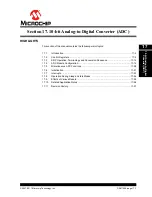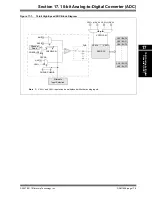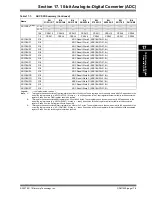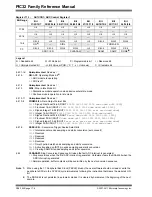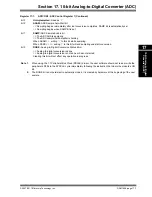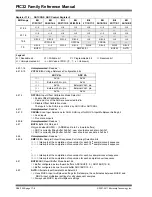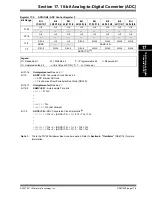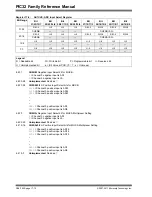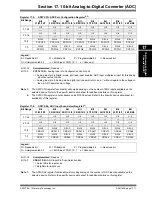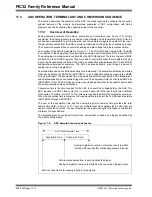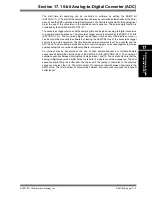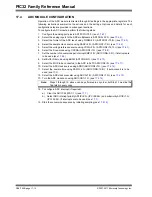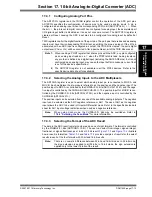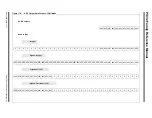
PIC32 Family Reference Manual
DS61104E-page 17-2
© 2007-2011 Microchip Technology Inc.
17.1
INTRODUCTION
The PIC32 10-bit Analog-to-Digital Converter (ADC) includes the following features:
• Successive Approximation Register (SAR) conversion
• Up to 16 analog input pins
• External voltage reference input pins
• One unipolar differential Sample-and-Hold Amplifier (SHA)
• Automatic Channel Scan mode
• Selectable conversion trigger source
• 16-word conversion result buffer
• Selectable Buffer Fill modes
• Eight conversion result format options
• Operation during CPU Sleep and Idle modes
illustrates a block diagram of the 10-bit ADC. The 10-bit ADC can have up to 16
analog input pins, AN0 through AN15. In addition, there are two analog input pins for external
voltage reference connections. These voltage reference inputs may be shared with other analog
input pins and may be common to other analog module references. The actual number of analog
input pins and external voltage reference input configuration will depend on the specific PIC32
device. Refer to the specific device data sheet for more information.
The analog inputs are connected through two multiplexers to one SHA. The analog input
multiplexers can be switched between two sets of analog inputs between conversions. Unipolar
differential conversions are possible on all channels
,
other than the pin used as the reference,
using a reference input pin (see
).
The Analog Input Scan mode sequentially converts user-specified channels. A control register
specifies which analog input channels will be included in the scanning sequence.
The 10-bit ADC is connected to a 16-word result buffer. Each 10-bit result is converted to one of
eight 32-bit output formats when it is read from the result buffer.
Note:
This family reference manual section is meant to serve as a complement to device
data sheets. Depending on the device variant, this manual section may not apply to
all PIC32 devices.
Please consult the note at the beginning of the
“10-bit Analog-to-Digital
Converter (ADC)”
chapter in the current device data sheet to check whether this
document supports the device you are using.
Device data sheets and family reference manual sections are available for
download from the Microchip Worldwide Web site at:

